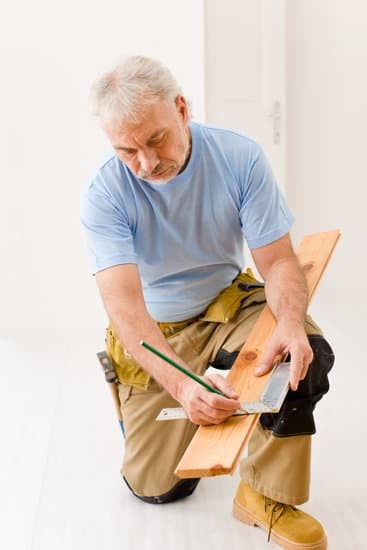Are home improvements tax deductible for rental property? Understanding the ins and outs of tax-deductible home improvements is crucial for rental property owners looking to maximize their tax benefits. Whether it’s renovating a kitchen, updating appliances, or making structural changes, knowing what can be considered as a tax deduction is essential for landlords.
Making improvements to a rental property not only enhances its appeal to potential tenants but can also result in tax benefits. From increasing the rental value to potential deductions, there are various advantages to investing in home improvements. However, it’s important to understand the distinction between repairs and improvements when it comes to tax deductions.
Knowing the difference between repairs and improvements is essential for determining eligibility for tax deductions. While repairs are generally deductible in the year they are made, improvements must be depreciated over time. Understanding how depreciation works and the documentation required is crucial for maximizing tax benefits on home improvements for rental properties. Keep reading to learn more about understanding tax-deductible home improvements for rental properties and how it can benefit landlords.
Benefits of Making Home Improvements for Rental Property
Making home improvements for rental property can have numerous benefits for landlords and property owners. Not only can it increase the overall value of the property, but it can also attract more potential renters and lead to higher rental income. Additionally, there are potential tax advantages that come with making these improvements, making it a win-win situation for property owners.
Increase in Rental Value
By making necessary and appealing home improvements, landlords can increase the overall rental value of their property. Upgrades such as kitchen renovations, bathroom remodels, or energy-efficient installations can make the property more desirable to potential renters. With higher rental value, landlords can maximize their investment returns and potentially cover the costs of the improvements through increased rental income.
Potential for Tax Deductions
In addition to increasing rental value, there is also the potential for tax deductions on home improvements made for rental properties. Certain types of home improvements may qualify for tax deductions under specific IRS guidelines. This means that landlords could potentially recoup some of their expenses through tax benefits, making it financially advantageous to invest in these upgrades.
Long-Term Investment
Home improvements not only benefit landlords in the short term by increasing rental income and potential tax deductions, but they also serve as a long-term investment in the property. Upgrades and renovations can improve the overall condition and quality of the property, leading to reduced maintenance costs over time. Additionally, well-maintained properties are more likely to retain or increase their value over the years, providing a long-term return on investment for landlords.
The Difference Between Repairs and Improvements
When it comes to tax deductions for rental property, it’s important for property owners to understand the difference between repairs and improvements. This is because the IRS treats these two types of expenses differently when it comes to claiming deductions.
Explanation of the Tax Deductions for Repairs Versus Improvements
Repairs are considered to be any work that is necessary to keep the property in good condition and functioning order. These expenses are generally deductible in the year they are incurred. On the other hand, improvements are expenses that add value to the property or prolong its useful life. These expenses must be capitalized and depreciated over time rather than deducted in a single year.
Examples of repairs include fixing a leaky roof, replacing broken windows, or repairing plumbing issues. These are all necessary maintenance tasks that are generally deductible in the year they occur. On the other hand, examples of improvements include adding a new roof, renovating a kitchen, or installing a new heating system. These expenses must be capitalized and depreciated over several years.
Examples of Repairs Versus Improvements for Rental Property
For example, if a rental property owner replaces a few shingles on the roof after a storm, this would generally be considered a repair and could be deducted in the same year. However, if the entire roof is replaced with a more durable and high-quality material that adds value to the property, this would likely be considered an improvement and would need to be capitalized and depreciated over time.
Understanding the distinction between repairs and improvements is crucial when it comes to tax deductions for rental property. It’s important for property owners to keep detailed records of all repair and improvement expenses to ensure compliance with IRS regulations.
How to Determine the Depreciation of Home Improvements
When it comes to rental property, home improvements can be depreciated over time, and understanding how depreciation works is crucial for maximizing tax benefits. Depreciation is a tax deduction that allows you to recover the costs of income-producing properties over time. Here are the steps for determining the depreciation of home improvements:
- Evaluate the Useful Life: Determine the useful life of the home improvement. The IRS provides guidelines on the useful life of different types of property improvements, so it’s important to refer to these guidelines when calculating depreciation.
- Calculate the Cost Basis: The cost basis of an improvement includes not only the initial installation cost but also any additional costs incurred during installation, such as labor and materials.
- Choose a Depreciation Method: There are different methods for calculating depreciation, including straight-line depreciation, accelerated depreciation, and Section 179 deduction. Consult with a tax professional to determine which method is most advantageous for your specific situation.
It’s important to note that land cannot be depreciated, so when determining the depreciation of home improvements, it’s essential to allocate the costs between the building and land value. Keeping detailed records and consulting with a tax professional can ensure accurate and maximized deductions for home improvements on rental property.
Understanding how to calculate and claim depreciation on home improvements can significantly impact your tax liabilities as a rental property owner. By following these steps and seeking expert guidance, you can make informed decisions about making home improvements that yield optimal tax benefits while staying in compliance with IRS regulations.
Documentation Requirements for Tax Deductible Home Improvements
When it comes to tax deductible home improvements for rental property, keeping detailed and organized documentation is crucial. Without proper documentation, it can be challenging to substantiate your claims for tax deductions. Here are some key documentation requirements to consider:
- Receipts and Invoices: Keep all receipts and invoices related to the home improvements. This includes materials, labor costs, and any other expenses incurred during the improvement process.
- Contracts: If you hired contractors or professionals to perform the home improvements, retain copies of the contracts outlining the scope of work, cost estimates, and payment terms.
- Before and After Photos: Visual documentation such as before and after photos can serve as evidence of the home improvements made. This can support your claim for tax deductions if needed.
In addition to these specific documentation requirements, it’s important to maintain organized records of all relevant financial documents related to the rental property. This can include lease agreements, rental income statements, property tax records, and any other documents that demonstrate the ongoing operation and maintenance of the rental property.
Keeping thorough documentation not only supports your claims for tax deductions but also provides a clear record of the investment made in improving the rental property. By maintaining accurate records, you can avoid potential complications in case of a tax audit while also maximizing your eligible tax benefits. Remember, proper record-keeping is an essential part of responsibly managing a rental property from a tax perspective.
Eligibility and Limitations for Tax Deductible Home Improvements
Understanding the eligibility and limitations for tax deductible home improvements is crucial for rental property owners looking to maximize their tax benefits. In general, home improvements that add value to the rental property are eligible for tax deductions. This includes renovations such as adding a new bathroom or kitchen, replacing the roof, installing new flooring, or adding a deck. However, it’s important to note that not all improvements are eligible for tax deductions.
There are limitations on tax deductions for certain types of home improvements. For example, luxury items such as swimming pools or high-end appliances may not qualify for tax deductions. Additionally, any improvements made to the land surrounding the rental property, such as landscaping or adding a fence, are typically not eligible for tax deductions. It’s important for rental property owners to carefully consider which home improvements they make in order to ensure they are eligible for tax benefits.
Rental property owners must also consider eligibility criteria when making home improvements. Generally, the IRS requires that the improvements must be considered necessary and ordinary in order to be eligible for tax deductions. This means that the improvement should be common and accepted in the rental property industry. For example, repairing a leaky roof would likely qualify as an eligible improvement, while installing a state-of-the-art security system may not.
| Eligibility Criteria | Limitations |
|---|---|
| The improvement must be necessary and ordinary | Luxury items like swimming pools and high-end appliances do not qualify |
| Improvements that add value to the rental property are typically eligible | Improvements made to the land surrounding the rental property may not qualify |
Factors to Consider Before Making Home Improvements for Rental Property
Before diving into making home improvements for a rental property, there are several factors that landlords should consider to make informed decisions. One of the most important considerations is the financial aspect. Landlords should assess their budget and determine how much they are willing to invest in home improvements. It’s crucial to strike a balance between making cost-effective repairs and upgrades that will attract potential tenants and increase rental value.
Another factor to consider is the current market demand and trends. Researching the local real estate market can provide valuable insights into the specific home improvements that can make a rental property more appealing to prospective tenants. For example, adding energy-efficient appliances or incorporating smart home technology may be attractive features in certain markets and could potentially increase rental income.
Additionally, landlords need to evaluate the potential risks and benefits associated with making home improvements for their rental property. This involves considering not only the initial costs but also long-term maintenance and repair expenses. For instance, while installing a swimming pool might seem like an appealing feature, it also comes with ongoing maintenance costs and liability risks. Understanding these trade-offs is essential before embarking on any major home improvement projects.
| Factors to Consider | Considerations |
|---|---|
| Financial Aspect | Determine budget for investments; Strike a balance between cost-effective upgrades |
| Market Demand and Trends | Research local real estate market; Identify attractive features for potential tenants |
| Risks and Benefits Assessment | Evaluate long-term maintenance costs; Understand trade-offs of different home improvements |
Expert Tips for Maximizing Tax Benefits on Home Improvements
In conclusion, understanding the tax deductible home improvements for rental property is essential for maximizing tax benefits. Making home improvements not only increases the rental value but also provides the potential for valuable tax deductions. It is important for property owners to differentiate between repairs and improvements, as each has different implications for tax deductions. Additionally, keeping organized documentation and understanding the eligibility and limitations of tax deductions are crucial for claiming the maximum benefits.
Furthermore, determining the depreciation of home improvements is a key factor in maximizing tax benefits. Property owners should be aware of how depreciation works for rental property and follow the necessary steps for calculating depreciation on home improvements. Before making any home improvements, it is important to consider factors such as financial implications, potential risks, and benefits. By carefully considering these factors, property owners can make informed decisions that lead to optimal tax benefits.
Lastly, seeking expert advice from tax professionals can provide valuable insights into maximizing tax benefits on home improvements. Tax professionals can offer guidance on staying in compliance with tax laws and regulations while making home improvements and claiming deductions. By following these expert tips and staying informed about tax laws related to rental property home improvements, property owners can ensure they are making the most of available tax benefits.
Frequently Asked Questions
Can You Write Off a Remodel on a Rental?
Yes, it is possible to write off a remodel on a rental property, but there are certain rules and guidelines that need to be followed. Generally, the cost of the remodel can be deducted as a capital expense over time through depreciation, rather than being written off all at once.
It’s important to keep accurate records and consult with a tax professional to ensure compliance with IRS regulations.
Can You Write Off New Flooring in Rental Property?
The cost of new flooring in a rental property can also be written off, but it is typically treated as a capital expense and depreciated over time rather than deducted all at once. The type of flooring and the cost involved will determine the depreciation schedule.
Again, proper record-keeping and professional advice are crucial for taking advantage of this deduction.
What Is Not Deductible as a Rental Expense?
While many expenses related to maintaining a rental property are deductible, certain costs cannot be written off as rental expenses. These non-deductible expenses may include personal expenses such as clothing or personal grooming, as well as any improvements that increase the value of the property rather than just maintaining its current condition.
It’s important for landlords to understand which expenses are deductible and which are not in order to accurately report their rental income and expenses on their tax returns.

I’m thrilled to have you here as a part of the Remodeling Top community. This is where my journey as an architect and remodeling enthusiast intersects with your passion for transforming houses into dream homes.





